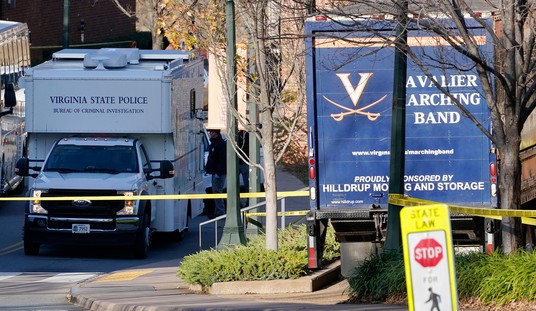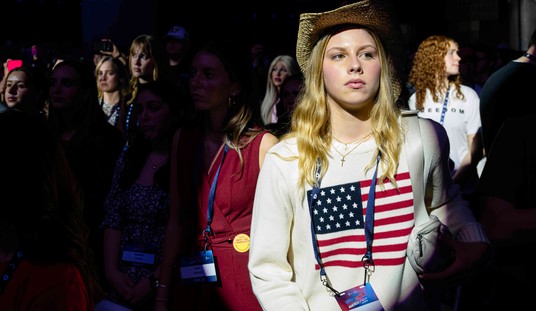We’re in deep trouble. Not only is the variant here, but our non-pharmaceutical nuclear weapon against it — lockdowns — simply won’t be entertained in many U.S. states. It’s off the table for political and economic reasons.
And even if it were on the table, whether it would drastically reduce the spread of the British variant of the virus is an open question at the moment. Various parts of the UK were already in lockdown as the variant overran the country. Boris Johnson is shifting to a more draconian national lockdown today because he’s desperate to find a way to slow it down.
As miraculous as the vaccine is, it may have arrived a month or two too late to avert an even worse COVID catastrophe.
Deep trouble:
"It's clear that we need to do more together to bring this new variant under control while our vaccines are rolled out."
U.K. Prime Minister Boris Johnson has ordered a new national lockdown as Britain faces a "critical moment" in the coronavirus pandemic https://t.co/mlw9tV4uys pic.twitter.com/LzabBpYrER
— Bloomberg (@business) January 4, 2021
I linked this graphic in an earlier post but it’s worth posting it here again. That’s about as vertical as an epidemic curve gets — and again, that happened *during a partial lockdown*.
Cases in the UK are up and to the right.
Probably due to the new strain.
What does that mean for your country? 🧵 pic.twitter.com/t4Wc4wAGBg— Tomas Pueyo (@tomaspueyo) January 4, 2021
Yesterday the UK recorded 52,000 new cases and lately they’re averaging between 500-600 deaths, numbers that are on par with the U.S. epidemic per capita. (The UK recorded nearly 1,000 deaths on December 30 and December 31, which would equate to around 5,000 daily deaths in the U.S.) If we’re doing as badly as they are before the variant has propagated here, imagine what this country will look like in a month or two. “The situation in L.A. County hospitals is so critical that ambulance crews have been advised to try to cut back on their use of oxygen and not to bring to hospitals patients who have virtually no chance of survival,” reports the LA Times today. What will they be reporting in February, when the variant is running wild?
Or is it running wild already?
New York state confirmed its first case of a new, more contagious variant of the coronavirus that was initially discovered in the United Kingdom, Gov. Andrew Cuomo said Monday…
The case was identified in a 60-year-old man from Saratoga county who had no prior travel history, Cuomo said during a conference call with reporters. The man worked at a jewelry store where three other people have also tested positive for Covid-19. The state is investigating whether those cases were caused by the new strain.
Cuomo told reporters that the state has conducted about 5,000 tests in search for the new variant, known as B.1.1.7. Cuomo said he believes it’s “much more” widespread than people already know.
Everyone reading that is having deja vu, thinking back to the first reports in early March of pockets of cases detected in New York City. A month later it was the COVID epicenter of planet Earth. Again: What sort of horror show are we facing in February, exactly?
The natural reaction when hearing that the British variant is more transmissible than the standard virus but not more deadly is to sigh with relief. I’m guilty of that myself. But it’s a mistake: Whether a deadlier variant will produce a higher body count than a more transmissible variant is a math problem, dependent upon how much more deadly/transmissible each variant is. Zeynep Tufekci ran the numbers:
To understand the difference between exponential and linear risks, consider an example put forth by Adam Kucharski, a professor at the London School of Hygiene & Tropical Medicine who focuses on mathematical analyses of infectious-disease outbreaks. Kucharski compares a 50 percent increase in virus lethality to a 50 percent increase in virus transmissibility. Take a virus reproduction rate of about 1.1 and an infection fatality risk of 0.8 percent and imagine 10,000 active infections—a plausible scenario for many European cities, as Kucharski notes. As things stand, with those numbers, we’d expect 129 deaths in a month. If the fatality rate increased by 50 percent, that would lead to 193 deaths. In contrast, a 50 percent increase in transmissibility would lead to a whopping 978 deaths in just one month—assuming, in both scenarios, a six-day infection-generation time.
No contest. The good news is that we’re already weeks into vaccinating members of the group that’s most likely to die from an infection, nursing-home residents. The bad news is that in many states there are only halting efforts, if any, right now to vaccinate senior citizens en masse.
That needs to change immediately. We’re out of time. In a month we’ll look back at the slowfootedness among political leaders the same way we did in April 2020 and ask, “Why didn’t they move sooner? Didn’t they see the crisis mounting? What were they waiting for?” Boris Johnson’s already hearing that, in fact, and not just from the other party:
We therefore cannot afford to wait: all schools should be closed, international travel stopped, household mixing limited and the tier system reviewed so that the highest tier really does bring down infection levels (as with the first lockdown).
— Jeremy Hunt (@Jeremy_Hunt) January 4, 2021
Hunt is a Tory MP who spent six years as the UK’s minister of health. He tweeted that this morning before Johnson finally pulled the trigger on a new national lockdown, something that’s all but unthinkable at this point from any conservative leader in the U.S. In fact, as I write this, Trump’s getting ready to appear at a crowded election rally for Georgia’s runoffs tomorrow. Unless I missed it, he hasn’t said a word about the new COVID variant that’s spreading in the U.S.
But he did tweet this a few days before Christmas, when Johnson ordered the partial — and insufficient — lockdown to try to tamp down the spread of the variant. Here’s your exit quotation.
https://twitter.com/realDonaldTrump/status/1340377186847625218








Join the conversation as a VIP Member